AMA DABLAM EXPEDITION WITH ISLAND PEAK
AMA DABLAM EXPEDITION WITH ISLAND PEAK
AMA DABLAM OVERVIEW
The Ama Dablam Expedition with Island Peak combines two iconic climbing experiences in the Everest region of Nepal, offering adventurers a thrilling and challenging journey amidst the majestic Himalayan landscapes. This expedition typically spans around 26 days, encompassing trekking, acclimatization, technical climbing, and breathtaking summit attempts.
Ama Dablam 6812M is renowned as one of the most beautiful and exposed Himalayan mountains in the Everest region. It is a highly sought-after mountain for climbing enthusiasts. Whether you plan to tackle it before or after a bigger expedition like Everest, Ama Dablam is a mountaineering challenge on its own. Many alpinists and mountaineers consider a climb of Ama Dablam to be a “must-do” experience.
From Lukla, our expedition includes a cultural trek through the mesmerizing Gokyo lake/valley to the base camp, followed by a climb of Ama Dablam’s terrain via technical rock, vertical snow, and ice routes, and breathtaking exposed panoramic views of Everest, Lhotse, and Makalu from the summit. We will ascend Amadablam via the South West ridge route, setting up 2 or possibly 3 camps (camp 3 depends on the assessment of our rope fixing team). On summit day, the route involves steep snow and ice slopes with extreme exposure leading directly to the summit.
History: Ama Dablam was first summited on 13th March 1961, a Silver hut scientific expedition led by Sir Edmund Hillary. Ama Dablam’s expedition has been a dream for many mountaineers. Its Southwest ridgeline is the safest route to climb this amazing peak.
EXPEDITION HIGHLIGHTS
- Ama Dablam 6812M summit, Island Peak 6189M or Lobuche East 6119M (Acclimatisation training peak)
- South-west ridge route, Camp 1 – 2 (possible camp 2.9 or 3) strategy
- 10 days in Ama Dablam Base camp 4570M and higher
- 1:1 Guide/Climber ratio throughout the expedition
- Scenic Khumbu valley trek
Itinerary
-
Day 1 & 2 Arrival and Kathmandu (Equipment check, induction with Expedition leader )
On Day 1 of the Ama Dablam Expedition with Island Peak, participants will arrive in Kathmandu, Nepal, where they will be greeted by the expedition team. The first day typically involves settling into accommodations and undergoing an equipment check. This check ensures that all climbers have the necessary gear and equipment required for the expedition. Any missing items can be addressed through rental services available in Kathmandu. Participants will also have an induction session with the expedition leader or guide, where they will receive a detailed briefing on the itinerary, safety protocols, and climbing strategies for both Ama Dablam and Island Peak. This session is crucial for establishing clear expectations and fostering camaraderie among team members.
On Day 2, the focus remains in Kathmandu for final preparations before departure to the mountains. This day allows for any last-minute adjustments to equipment and provisions. Participants may also have the opportunity to explore Kathmandu, visiting cultural sites such as temples, markets, and monasteries, providing an enriching cultural experience before the rigorous climb ahead. Additionally, briefings on local customs, altitude sickness prevention, and emergency procedures are likely covered during this day. The induction and equipment check process ensures that climbers are well-prepared and equipped for the challenging ascent of Ama Dablam and Island Peak, fostering a cohesive and proactive team dynamic from the outset of the expedition.
-
Day 3 Lukla / Monjo 2800M (5 - 7 hours)
-
Day 4 & 5 Namche Bazaar/ Acclimatisation 3440M (3 hours acclimatisation trek, up to 3375M)
On Day 4 and 5 of the expedition, the team remains in Namche Bazaar for acclimatization. Namche Bazaar is a bustling Sherpa town and a crucial acclimatization stop on the trek to Ama Dablam and Island Peak. The day begins with a short acclimatization trek, ascending gradually to higher elevations, typically reaching up to around 3375 meters. This trek allows climbers to adjust to the increasing altitude and thinning air, reducing the risk of altitude-related illnesses such as altitude sickness. Along the way, trekkers are treated to stunning views of the surrounding Himalayan peaks, including Thamserku and Kongde Ri. The team then returns to Namche Bazaar, where they have the opportunity to explore the vibrant local market, visit the Sherpa Cultural Museum, or simply relax and soak in the unique mountain atmosphere. This rest day is essential for proper acclimatization and is strategically incorporated into the itinerary to optimize climbers’ readiness for the challenges ahead on the Ama Dablam and Island Peak climbs.
-
Day 6 Namche / Phortse 3840M (6 hours)
On Day 6 of the expedition, the team departs from Namche Bazaar and begins a trek towards Phortse, situated at an altitude of 3840 meters. The trail leads through scenic landscapes characterized by lush forests, crossing several suspension bridges over the roaring Dudh Koshi River. As the team ascends, they are treated to stunning views of the surrounding Himalayan peaks, including Ama Dablam, Thamserku, and Kangtega. The trek involves a gradual ascent with some challenging uphill sections, providing a good opportunity for further acclimatization. Phortse is a charming Sherpa village nestled amidst the mountains, offering a glimpse into the local way of life. Upon arrival, the team settles into tea houses or lodges in Phortse, where they can rest, enjoy hearty meals, and continue acclimatizing in preparation for the upcoming climbs of Ama Dablam and Island Peak. The day’s trek typically takes around 6 hours, allowing ample time to soak in the natural beauty and tranquility of the Himalayan terrain.
-
Day 7 Phortse to Pheriche 4371M (5 to 6 hours)
On Day 7 of the expedition, the team embarks on a trek from Phortse to Pheriche, ascending to an elevation of 4371 meters. The trail from Phortse continues to showcase the stunning mountain scenery of the Everest region, with panoramic views of towering peaks like Ama Dablam and Lhotse. The trek involves a steady ascent through alpine landscapes, passing yak pastures, rhododendron forests, and small Sherpa settlements along the way. As the altitude increases, climbers must maintain a steady pace to allow for proper acclimatization and minimize the risk of altitude-related illnesses. Pheriche, a small village located in the Khumbu Valley, serves as a popular stopover for trekkers and climbers heading towards Everest Base Camp and other high-altitude destinations. Upon reaching Pheriche, the team settles into tea houses or lodges, where they can rest and recuperate while taking in the awe-inspiring views of the surrounding peaks. This trek typically takes between 5 to 6 hours, providing ample time to adjust to the higher elevation and prepare for the challenges ahead on the Ama Dablam and Island Peak climbs.
-
Day 8 Pheriche acclimatisation day
On Day 8 of the expedition, the team remains in Pheriche for a crucial acclimatization day. Acclimatization is vital for climbers ascending to higher altitudes to minimize the risk of altitude sickness and ensure their bodies can adapt effectively to the reduced oxygen levels. Pheriche, located at an altitude of 4371 meters, offers an ideal environment for acclimatization with its stunning mountain surroundings and relatively lower stress level.
During this rest day, climbers have the opportunity to participate in short hikes or walks around Pheriche, ascending to higher elevations and then descending back to the village. These activities help stimulate the body’s adaptation to the altitude by exposing it to higher levels of stress and then allowing for recovery at lower altitudes. Climbers can also use this day to rest, hydrate, and engage in light stretching exercises to maintain physical well-being.
Additionally, the team may attend informative sessions at the Pheriche Himalayan Rescue Association (HRA) clinic, which provides valuable information on altitude sickness prevention and treatment. This rest day not only aids in acclimatization but also allows climbers to recharge and mentally prepare for the upcoming challenges of the Ama Dablam and Island Peak climbs. Overall, Day 8 in Pheriche is a crucial component of the expedition itinerary, ensuring climbers are physically and mentally ready for the higher altitudes they will encounter in the days ahead
-
Day 9 Pheriche to Chukung 4730M (6 - 7 hours)
On Day 9 of the expedition, the team embarks on a challenging trek from Pheriche to Chukung, ascending to an altitude of 4730 meters. The trek begins with a gradual climb out of Pheriche, traversing rocky terrain and moraine landscapes as the team heads towards the Imja Valley. Along the way, climbers are treated to spectacular views of the surrounding Himalayan peaks, including Ama Dablam and Island Peak (Imja Tse).
As the trail ascends, the air becomes thinner, requiring a steady pace and careful attention to acclimatization. The route passes through remote and rugged terrain, with occasional encounters of wildlife like Himalayan birds and yaks grazing in high-altitude pastures. Climbers may also traverse glacial moraines before reaching Chukung, a small settlement nestled in the Imja Valley.
Upon arrival in Chukung, the team settles into tea houses or lodges, where they can rest and refuel with hot meals. Chukung serves as a strategic base for climbers preparing to summit Island Peak (Imja Tse) and offers stunning vistas of nearby peaks and glaciers. This trek typically takes between 6 to 7 hours, allowing ample time for acclimatization and soaking in the awe-inspiring beauty of the high-altitude landscape. The team’s arrival in Chukung marks a significant milestone as they prepare for the challenging ascent ahead on Island Peak.
-
Day 10 Chukung to Island Peak BC 5100M (5 - 6 hours)
On Day 10 of the expedition, the team sets out from Chukung towards Island Peak Base Camp, situated at an elevation of 5100 meters. The trek begins with a gradual ascent through the Imja Valley, following a rocky trail alongside the Lhotse Glacier. As climbers progress, they are treated to breathtaking views of surrounding peaks like Ama Dablam, Lhotse, and Makalu.
The trail to Island Peak Base Camp involves navigating moraines and rocky terrain, with occasional crossings over small streams and glacial meltwater channels. As the team gains altitude, the air becomes noticeably thinner, requiring a slower pace to aid in acclimatization and reduce the risk of altitude-related ailments.
Upon reaching Island Peak Base Camp, the team sets up camp and prepares for the upcoming climb. This includes rest and hydration, as well as discussions with guides about the route, climbing techniques, and safety protocols. Island Peak Base Camp offers a rugged yet stunning setting, surrounded by towering peaks and glaciers, setting the stage for the challenging ascent to Island Peak’s summit the following day. The trek from Chukung to Island Peak Base Camp typically takes around 5 to 6 hours, allowing climbers to adjust to the high altitude and mentally prepare for the exciting climb ahead.
-
Day 11 IPBC to Summit 6189M to BC to Chukung (10+ hours)
On Day 11 of the expedition, the team embarks on the exhilarating climb from Island Peak Base Camp (5100 meters) to the summit of Island Peak (6189 meters), and then returns to Base Camp before descending back to Chukung. The ascent to the summit is the highlight of the expedition and involves a long day of challenging climbing.
The climb begins in the early hours of the morning, typically before dawn, to take advantage of stable weather conditions and minimize exposure to potential afternoon storms. Climbers navigate through rocky terrain, ascending steep slopes using fixed ropes where necessary. As the team gains altitude, the air becomes increasingly thin, requiring careful pacing and frequent rest breaks to manage energy levels and acclimatize.
The final stretch to the summit involves a steep snow and ice climb, culminating in a breathtaking panoramic view from the top. From the summit of Island Peak, climbers can enjoy stunning vistas of the surrounding Himalayan peaks, including Lhotse, Nuptse, and Makalu, as well as sweeping views of the Khumbu Valley below.
After spending time at the summit to celebrate the achievement and capture photos, the team descends carefully back to Island Peak Base Camp. Here, climbers take a well-deserved rest, pack up their gear, and then continue the descent back to Chukung. The return journey to Chukung typically takes several hours, with tired but elated climbers reflecting on their successful summit of Island Peak and the incredible experience of high-altitude mountaineering in the Everest region. This day marks a significant accomplishment for the team, showcasing their endurance, skill, and determination in conquering one of Nepal’s iconic peaks.
-
Day 12 Chukung to Pangboche 3985M (5 - 6 hours)
On Day 12 of the expedition, the team begins the trek from Chukung to Pangboche, descending from the high-altitude terrain back into lower elevations. The trail descends through the Imja Valley, offering beautiful views of the surrounding peaks and landscapes. As the team makes their way down, they pass through yak pastures, rhododendron forests, and charming Sherpa villages.
The descent from Chukung to Pangboche is gradual but can be steep in sections, requiring careful footing and attention to the trail. Along the way, climbers may encounter local wildlife and enjoy the tranquility of the Himalayan wilderness. Pangboche, located at an altitude of 3985 meters, is a traditional Sherpa village with a rich cultural heritage. The village is home to one of the oldest monasteries in the Khumbu region, offering climbers an opportunity to explore the local Buddhist culture and architecture.
Upon arrival in Pangboche, the team settles into tea houses or lodges, enjoying warm hospitality and hearty meals. This trekking day typically takes between 5 to 6 hours, allowing climbers to gradually descend and continue acclimatizing to lower altitudes. Pangboche serves as a pleasant stopover on the return journey, providing a chance to rest, recharge, and reflect on the memorable experiences of the expedition thus far.
-
Day 13 - 22 (10 Days of climbing, Ama Dablam Base Camp. Puja ritual ceremony, contingency day, Training and preparation for summit bid. Camp 1, Camp 2, possibly Camp 3 and Summit)
During Days 13 to 22 of the expedition, the focus is on the challenging ascent of Ama Dablam, one of the most iconic peaks in the Everest region. The team will establish a base camp at the foot of Ama Dablam, where preparations for the climb begin in earnest. This period includes several key activities:
Ama Dablam Base Camp Setup: Upon arrival at Ama Dablam Base Camp, the team will set up a well-equipped base camp to serve as the launching point for the climb. Tents, equipment, and supplies will be organized and secured.
Puja Ritual Ceremony: Before beginning the climb, a traditional Puja ritual ceremony is conducted by a Lama (Buddhist spiritual leader) to seek the blessings of the mountain gods for a safe ascent. This ceremony is culturally significant and marks the start of the climbing phase.
Training and Preparation: Climbers will undergo specific training sessions focused on technical skills required for Ama Dablam’s ascent, including ice climbing, fixed rope techniques, and high-altitude mountaineering. This phase allows climbers to acclimatize further and build confidence in their abilities.
Establishing High Camps: The team will establish and stock higher camps (Camp 1, Camp 2, and possibly Camp 3) along the route. Each camp serves as a strategic resting point during the ascent, allowing climbers to progress methodically while adapting to the altitude.
Summit Bid: Once adequately acclimatized and conditions are favorable, the team will make the summit push. This involves climbing from the highest established camp towards the summit, navigating challenging terrain such as rock faces, ice walls, and steep ridges.
Contingency Day: A contingency day is built into the schedule to account for unforeseen circumstances like adverse weather or additional acclimatization needs. This day provides flexibility in the itinerary to maximize the chances of a successful summit bid.
Throughout this period, climbers will face physical and mental challenges, relying on teamwork, determination, and technical expertise to overcome obstacles and reach the summit of Ama Dablam. The climb offers breathtaking views of the Himalayan landscape and a profound sense of accomplishment upon standing atop one of Nepal’s most majestic peaks. After summiting Ama Dablam, the team will descend safely back to base camp, concluding an unforgettable mountaineering experience in the heart of the Everest region.
-
Day 23 Return trek to Namche (6 - 7 hours)
On Day 23 of the expedition, the team begins the return trek from Ama Dablam Base Camp back towards Namche Bazaar. The trek involves descending from the high-altitude base camp through varied terrain, including rocky paths and forested areas. As the team descends, they will gradually retrace their steps along the trail, passing through scenic landscapes and enjoying views of the surrounding mountains.
The trek from Ama Dablam Base Camp to Namche typically takes around 6 to 7 hours, depending on the pace and conditions of the trail. Climbers will take frequent breaks to rest, hydrate, and soak in the final glimpses of the Himalayan scenery. Descending to lower elevations allows for easier breathing and reduced physical strain compared to the higher altitudes experienced during the ascent.
Upon reaching Namche Bazaar, climbers will settle into tea houses or lodges, where they can relax, unwind, and celebrate the successful completion of the Ama Dablam expedition. Namche Bazaar offers a vibrant atmosphere with shops, cafes, and cultural attractions, providing a welcome contrast to the remote mountain environments experienced during the climb. This return trek to Namche serves as a reflective journey, allowing climbers to appreciate the accomplishments of the expedition while preparing for the final leg of the journey back to Kathmandu.
-
Day 24 Return trek to Lukla (6 - 7 hours)
On Day 24 of the expedition, the team continues their descent from Namche Bazaar towards Lukla, marking the final leg of the trekking journey in the Everest region. The trek from Namche to Lukla typically takes around 6 to 7 hours, covering a distance of approximately 18 kilometers. The trail winds through lush forests, picturesque villages, and rolling hillsides, offering a mix of downhill and flat terrain.
As the team descends, they will pass through familiar villages such as Phakding and Monjo, where they may take breaks for refreshments and enjoy the last views of the majestic Himalayan peaks. The trail follows the Dudh Koshi River valley, crossing suspension bridges and meandering along well-trodden paths that have been traversed by countless trekkers over the years.
Upon reaching Lukla, climbers will celebrate the successful completion of the expedition with a sense of accomplishment and fulfillment. Lukla, known for its bustling atmosphere and lively energy, provides a fitting conclusion to the trek. The team will settle into accommodations in Lukla, reflecting on the incredible experiences and memories created during the expedition to Ama Dablam and Island Peak. This final trekking day encapsulates the essence of adventure and exploration in the Everest region, leaving climbers with lasting impressions of Nepal’s stunning landscapes and warm hospitality.
-
Day 25 Fly Lukla to Ramechap (30 min) and drive to Kathmandu (4-6 hours, traffic dependent)
On Day 25 of the expedition, the team begins the journey back to Kathmandu from Lukla. The day starts with an early morning flight from Lukla Airport to Ramechap, a town located southeast of Kathmandu. The scenic flight offers stunning views of the Himalayan landscape before landing at Ramechap Airport, which serves as an alternative to the Lukla Airport during busy seasons or inclement weather.
After arriving in Ramechap, the team will proceed with a 4 to 6-hour drive to Kathmandu, depending on traffic conditions and road conditions. The drive takes travelers through picturesque countryside, passing terraced fields, traditional villages, and river valleys. Along the way, there will be opportunities to stop for refreshments and enjoy the scenery.
Upon reaching Kathmandu, climbers will return to their accommodations in the bustling city, marking the conclusion of the adventurous expedition to Ama Dablam and Island Peak. This day of travel provides a transition from the remote mountain regions back to civilization, allowing climbers to reflect on their achievements and experiences while enjoying the comforts of urban life in Kathmandu.
-
Day 26 Final Departure from kathmandu
On Day 26, it’s time for the final departure from Kathmandu as the expedition comes to an end. Climbers will prepare for their respective flights back home or onward travels. The day typically begins with breakfast at the hotel followed by checking out and arranging transportation to the Tribhuvan International Airport. Depending on flight schedules, climbers may have some time to explore Kathmandu further, visiting local markets, historical sites like Durbar Square, or enjoying a final Nepalese meal.
At the airport, climbers will bid farewell to their expedition team and guides, exchanging gratitude and memories from the journey. After completing check-in and security procedures, climbers board their flights, taking with them unforgettable experiences, newfound friendships, and a sense of accomplishment from their successful expedition to Ama Dablam and Island Peak.
As climbers depart Kathmandu, they carry with them cherished memories of the Himalayas and the warm hospitality of Nepal. The journey home marks the end of an extraordinary adventure, leaving climbers with a deep appreciation for the natural beauty and cultural richness of the Everest region.
Include / Exclude
Cost Includes:
-
- Permits and climbing fees for Ama Dablam and Island Peak.
- Liaison officer fees (required for climbing expeditions in Nepal).
- Airport transfers (to and from Kathmandu).
- Accommodation in Kathmandu (typically a hotel) for the duration of the expedition.
- Tea house or lodge accommodation during the trekking portion of the expedition.
- Camping equipment and facilities at base camps and high camps.
- Full-board meals (breakfast, lunch, dinner) during the trekking and climbing phases of the expedition.
- Meals in Kathmandu as specified in the itinerary.
- Experienced climbing guides and Sherpa support team.
- Porters or yaks for carrying expedition equipment and supplies during the trek.
- Group climbing equipment (ropes, ice axes, crampons, helmets, etc.).
- Personal climbing gear rental (if needed).
- Internal flights (e.g., Kathmandu to Lukla) and ground transportation.
- Medical and emergency evacuation insurance for staff and climbers.
- Communication devices (satellite phone, radios) for safety and coordination.
Cost Excludes:
- International flights to and from Kathmandu.
- Visa fees for entry into Nepal.
- Personal gear and equipment (climbing clothing, boots, sleeping bag, etc.).
- Extra meals, beverages, and snacks not included in the itinerary.
- Travel insurance (recommended to cover trip cancellation, medical emergencies, and evacuation).
- Optional excursions or activities in Kathmandu.
- Additional nights of accommodation in Kathmandu beyond the expedition dates.
- Tips and gratuities for expedition staff (typically expected at the end of the expedition).
- Costs incurred due to unforeseen circumstances (e.g., delays, weather conditions).
- Any expenses related to personal emergencies or medical treatments.
Price per person
AMA DABLAM COST—
21 Days – $7950 P/P
26 Days – $8250 P/P
Please inquire about prices in your local currency. We accept payment in £GBP/ €EUROS/ $AUD
Deposit required: $1000 p/p
Usefull Information
ACCOMMODATIONS
Day 1 – 2 and 25 (5 Star hotel. Kathmandu – Hotel Dusit Princess)
AMA DABLAM EXPEDITION STRATEGY
Training and acclimatisation at Island Peak 6180M or (Lobuche East 6119M via Gokyo)
We will be climbing Island Peak or Lobuche East as our training and acclimatization peak before we depart for Ama Dablam Base Camp.
Ama Dablam Base Camp 4529M
During the Ama Dablam expedition, we will set up 2-3 camps and climb through the safest route, the southwest ridge. After establishing ourselves at Base Camp, trekking up the moraine we will move higher to Camp 1 (5,807 meters/19,052 feet). From Camp 1, fixed-line ropes are used for traversing on solid granite and climbing on snow/rocky exposed ridges and vertical granite to Camp 2. Camp 2 (6,200 meters/20,594 feet), also known as the “YELLOW TOWER,” is reached after 60-70 feet of vertical rock climbing. This marks the start of the more difficult and objectively dangerous part of the climb.
BASE CAMP (4529M) – CAMP 1 (5800M) AND CAMP 2 (6100M) ROTATION
Camp 2 Ama Dablam
Renaye, climbing to mushroom ridge, Ama Dablam Expedition. Photo – Masaru Kanda
From Days 12 to 19-20, we will review our climbing skills and complete a few acclimatization rotations to get accustomed to the terrain and properly acclimatize our bodies for the final summit push. During these rotations, we will carry our personal gear to our camps and store it there.
The very exposed nature of the route on Ama Dablam provides exciting climbing, although the slope is not as steep as one might expect. Climbers with moderate technical experience can attempt this route. On summit day, the route crosses between ice cliffs and follows a snow arête directly to the 6,810 meter summit. However, the climb is physically demanding and requires long hours of climbing on the final summit day.
CAMP 2.1 OR CAMP 3 (6400M) (SITUATIONAL) AND SUMMIT BID
Everest Expedition Nepal Guide on Ama Dablam summit 6812M
After evaluating the safety and conditions of the serac, we will decide whether to set up camp 3. If our lead Sherpa determines that the campsite is dangerous, we will make our summit attempt from Camp 2, starting in the early hours. (midnight or 1 aa)
The summit of Ama Dablam is wide and offers breathtaking views on clear weather days. Many of the 8000-meter and 7000-meter peaks are visible from the top of Ama Dablam, including Makalu (8463 meters) and the Baruntse range (7170 meters)
Equipment List
Clothing:
- Base Layers:
- Lightweight synthetic or wool top and bottom (for lower elevations)
- Midweight thermal top and bottom (for higher elevations)
- Insulation:
- Fleece jacket or soft-shell jacket
- Down or synthetic insulated jacket (for extreme cold)
- Shell:
- Waterproof and breathable jacket with hood (Gore-Tex recommended)
- Waterproof and breathable pants (Gore-Tex recommended)
- Headwear:
- Warm hat (wool or fleece)
- Balaclava or neck gaiter
- Sun hat or cap
- Handwear:
- Insulated climbing gloves
- Liner gloves (thin gloves for added warmth or use when climbing)
- Footwear:
- Mountaineering boots (compatible with crampons)
- Approach shoes or trekking boots (for lower elevations and base camp)
- Gaiters (to keep snow out of boots)
- Socks:
- Wool or synthetic socks (several pairs)
- Liner socks (for added warmth and to prevent blisters)
Climbing Gear:
- Climbing Equipment:
- Ice axe
- Crampons (compatible with your boots)
- Climbing harness
- Locking carabiners (several)
- Non-locking carabiners (several)
- Prusik cords or slings
- Climbing helmet
- Ropes:
- Dynamic climbing rope (length and diameter suitable for the climb)
- Protection:
- Nuts and hexes
- Ice screws
- Snow pickets
Camping Gear:
- Tent:
- Expedition-quality tent (suitable for high winds and snow)
- Sleeping:
- Sleeping bag (rated for sub-zero temperatures)
- Sleeping pad (insulated)
- Cooking:
- Backpacking stove (multi-fuel recommended)
- Fuel canisters or liquid fuel
- Cooking pot and eating utensils
- Miscellaneous:
- Headlamp with extra batteries
- Trekking poles
- Sunglasses (glacier glasses recommended)
- Sunscreen and lip balm
- First aid kit
- Personal hygiene items (toothbrush, wet wipes, etc.)
Other Essentials:
- Navigation:
- Map and compass (plus GPS if desired)
- Route description and guidebook
- Communication:
- Satellite phone or communication device
- Two-way radios (for team communication)
- Miscellaneous:
- Climbing permit and documentation
- Cash (for emergencies and incidental expenses)
- Repair kit (for gear and clothing)
- Travel duffel bags or waterproof sacks (for organizing and protecting gear during travel)
Personal Items:
- Documentation:
- Passport and permits
- Travel insurance details
- Entertainment:
- Book or e-reader
- Journal and pen
-
 Best Seasons June to September
Best Seasons June to September -
 Group Size 2-30
Group Size 2-30 -
 Duration 26 DAYS BOOKING OPEN
Duration 26 DAYS BOOKING OPEN -
 Maximum Altitude 6812M
Maximum Altitude 6812M -
 Trek Difficulty Technical and Challenging
Trek Difficulty Technical and Challenging

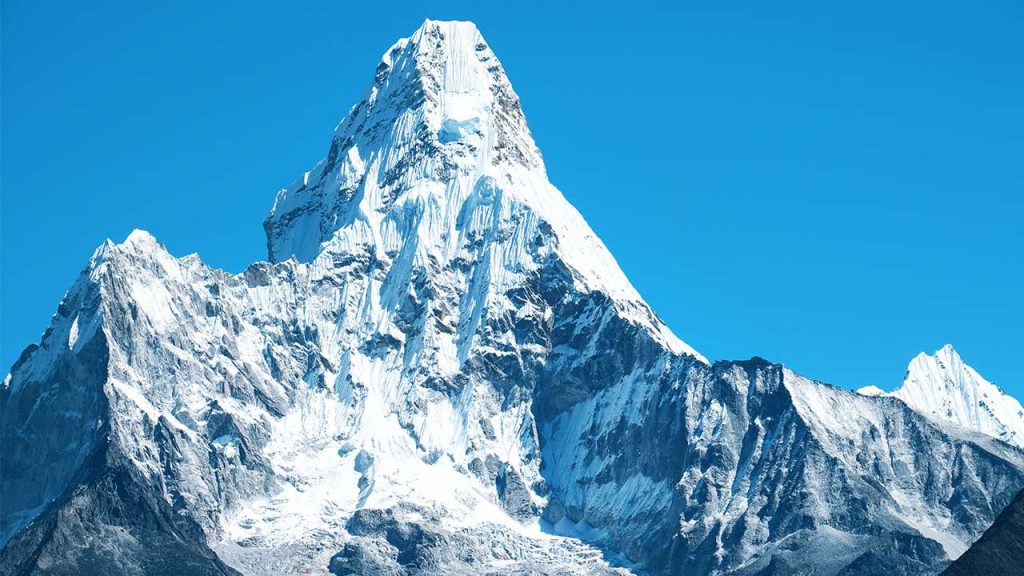


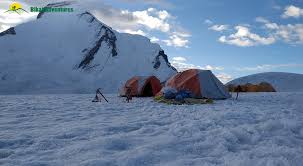
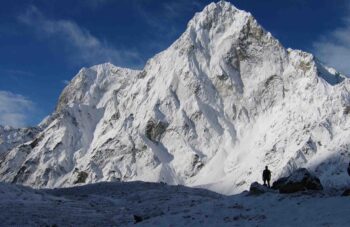
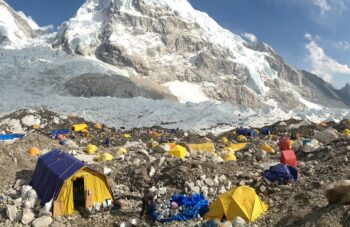
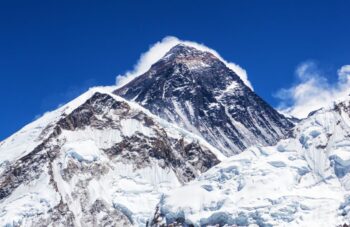
Leave a Reply